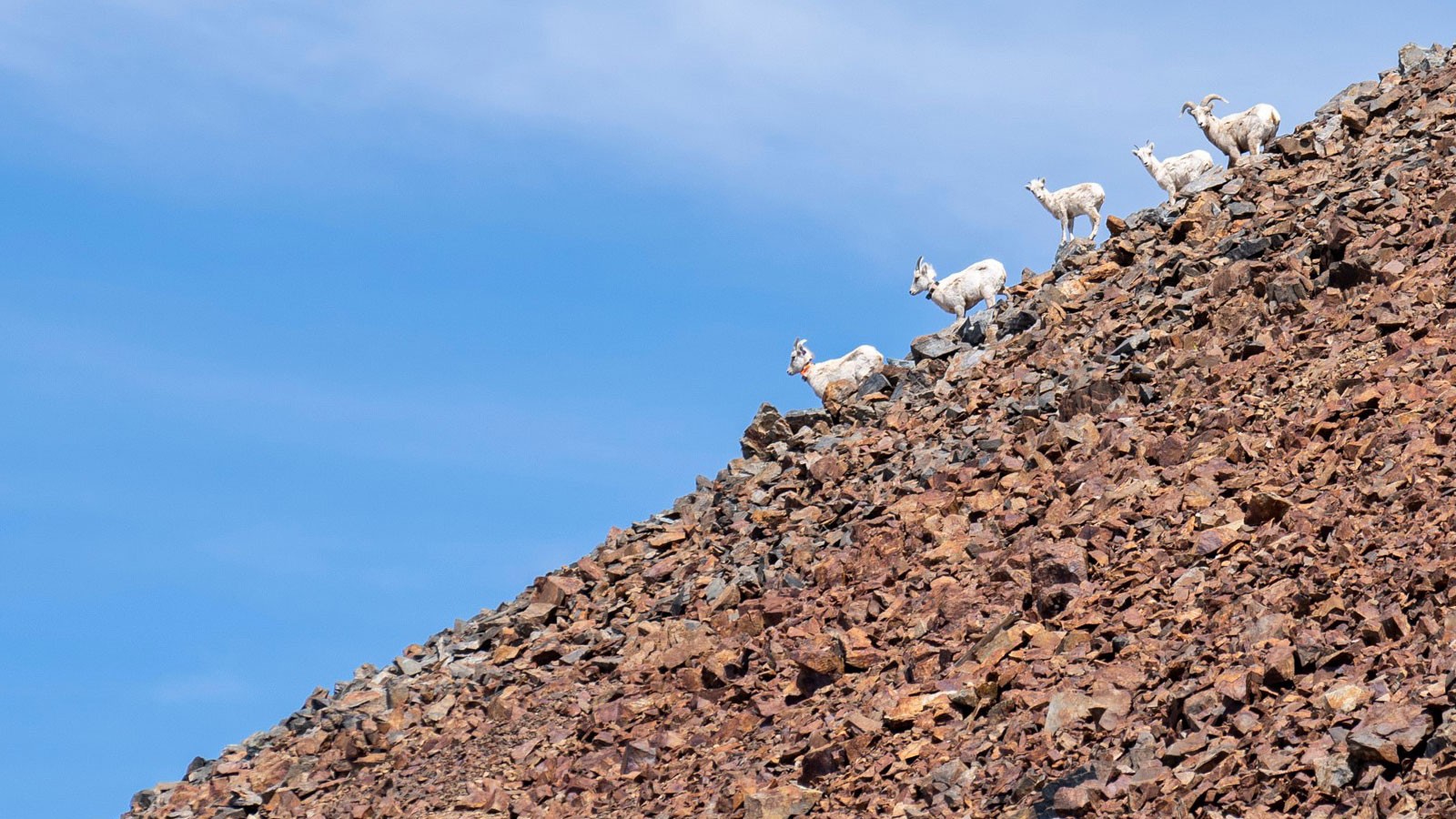Savvy Sheep: New Research Explores Flexible Decision-Making for Bighorn Sheep Migration
By Danielle Berger |
Sierra Nevada bighorn sheep make a tough choice every winter — to remain cold, hungry, and relatively safe from predators at high elevations, or to drop down to more temperate and more risky low-elevation ranges. New research explores the strategies they use to arrive at a decision.
“Thinking like a sheep” might actually be a compliment: A new study has found that following the herd is just one strategy bighorn sheep use to make decisions about seasonal migration.
Sierra Nevada bighorn sheep, while somewhat influenced by the behavior of their social group, also make decisions based on past experience and what they observe about their world from the rocky crags of the Sierra Nevada, according to work from Danielle Berger, Ronan Hart and Tal Avgar of the Department of Wildland Resources at Utah State University; Tom Stephenson and Dave German of the Sierra Nevada Bighorn Sheep Recovery Program; and Christian John of the Department of Wildlife, Fish and Conservation at the University of California-Davis.
Sierra Nevada bighorn sheep, an endangered species, spend summers near the rocky crests of California’s Sierra Nevada range, where inhospitably steep terrain offers protection from predators like mountain lions. But winter on these rocky peaks brings heavy snowfall and strong winds, particularly at high elevations. Snow buries plant foods and limits the bighorn’s ability to forage. Deep snow also makes movement difficult, and the cold weather forces bighorn to work harder to maintain their body temperature.
Bighorn sheep can choose to avoid difficult winter conditions by migrating downslope to lower elevations where there is typically less snow and more easily accessible plant foods. But that choice comes with trade-offs — migration to lower elevations imposes an energy cost of its own and leaves the bighorn more vulnerable to mountain lion predation without the natural advantage of especially steep terrain. Each winter, bighorn sheep have a tough decision: to remain cold, hungry and relatively safe from predators at high elevations, or to drop down to low-elevation range where they can find food and more temperate conditions but may encounter predators.
The new research describes three patterns that bighorn sheep might use to make choices about seasonal migration, and compared them to actual observed behavior. These included patterns that might occur if a sheep’s decisions were based solely on memory, those if the sheep had perfect, innate, and complete information about low-elevation conditions, and potential movement patterns based on making real-time decisions about migration given the sheep’s view of lower-elevations conditions from the winter range. By comparing actual migratory patterns to the three models, the team determined that movement of Sierra Nevada bighorn sheep best matched models of real-time decisions.
Bighorn sheep, the research shows, are “perception-informed” migrants, making migratory decisions by processing information about present habitat quality on low-elevation winter range based on what they can observe.
“As migratory animals have to face a rapidly changing climate, species that can process information and quickly adjust their behavior to match present environmental conditions will have a better chance for survival,” Berger said. “While Sierra Nevada bighorn sheep are somewhat influenced by their herd, the generalization that they are mindless followers is too simple. Instead, they are making informed decisions based on visual information about habitat quality and other factors.”
This research is part of a collection of papers exploring cognitive movement ecology in the journal Frontiers in Ecology and Evolution.
WRITER
Danielle Berger
Doctoral Student
Department of Wildland Resources
danielle.j.berger@gmail.com
CONTACT
Tal Avgar
Assistant Professor
Wildland Resources
(435)797-0301
tal.avgar@usu.edu
TOPICS
Wildlife 141stories Wildland 97stories Animals 90storiesComments and questions regarding this article may be directed to the contact person listed on this page.







